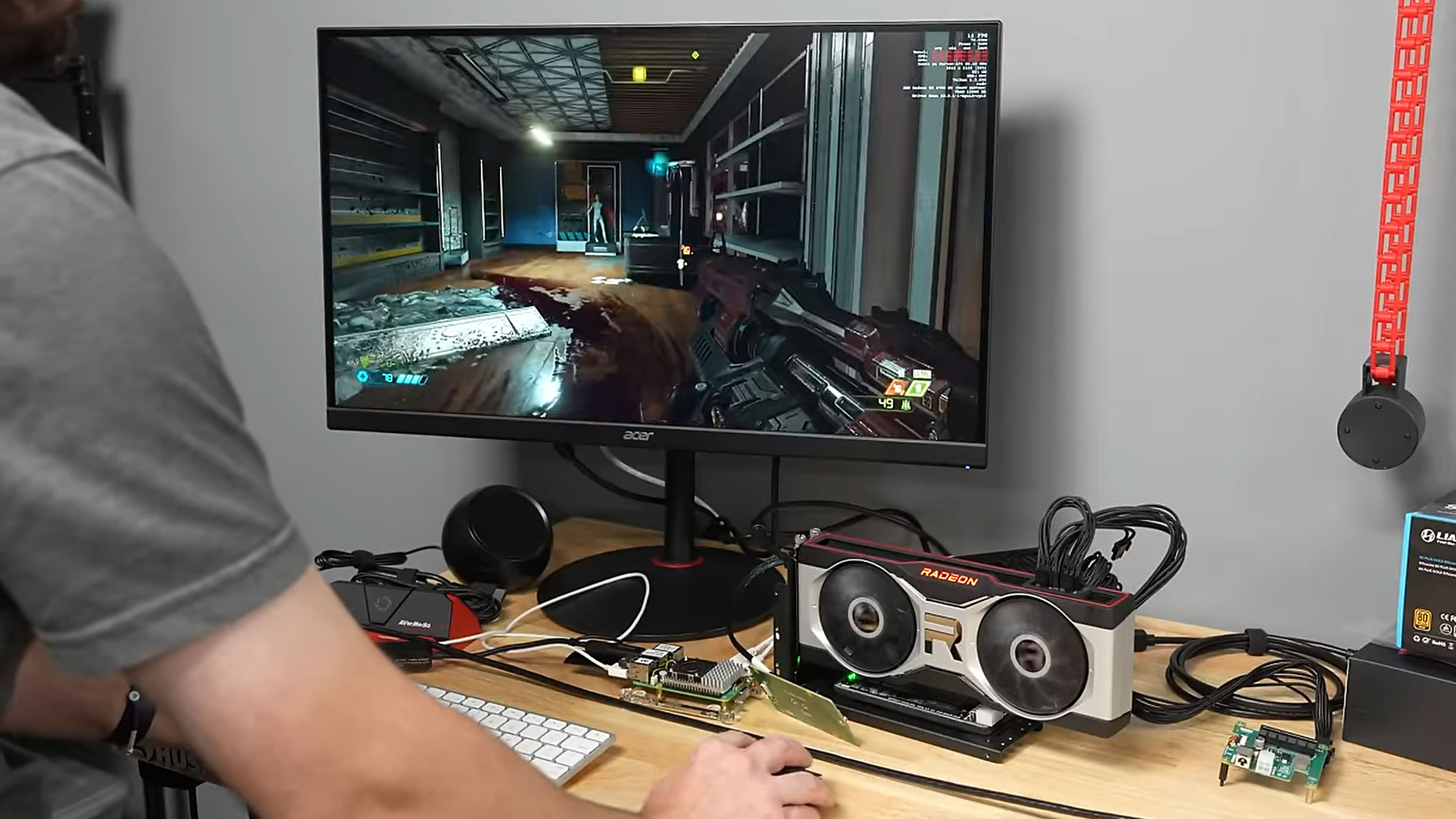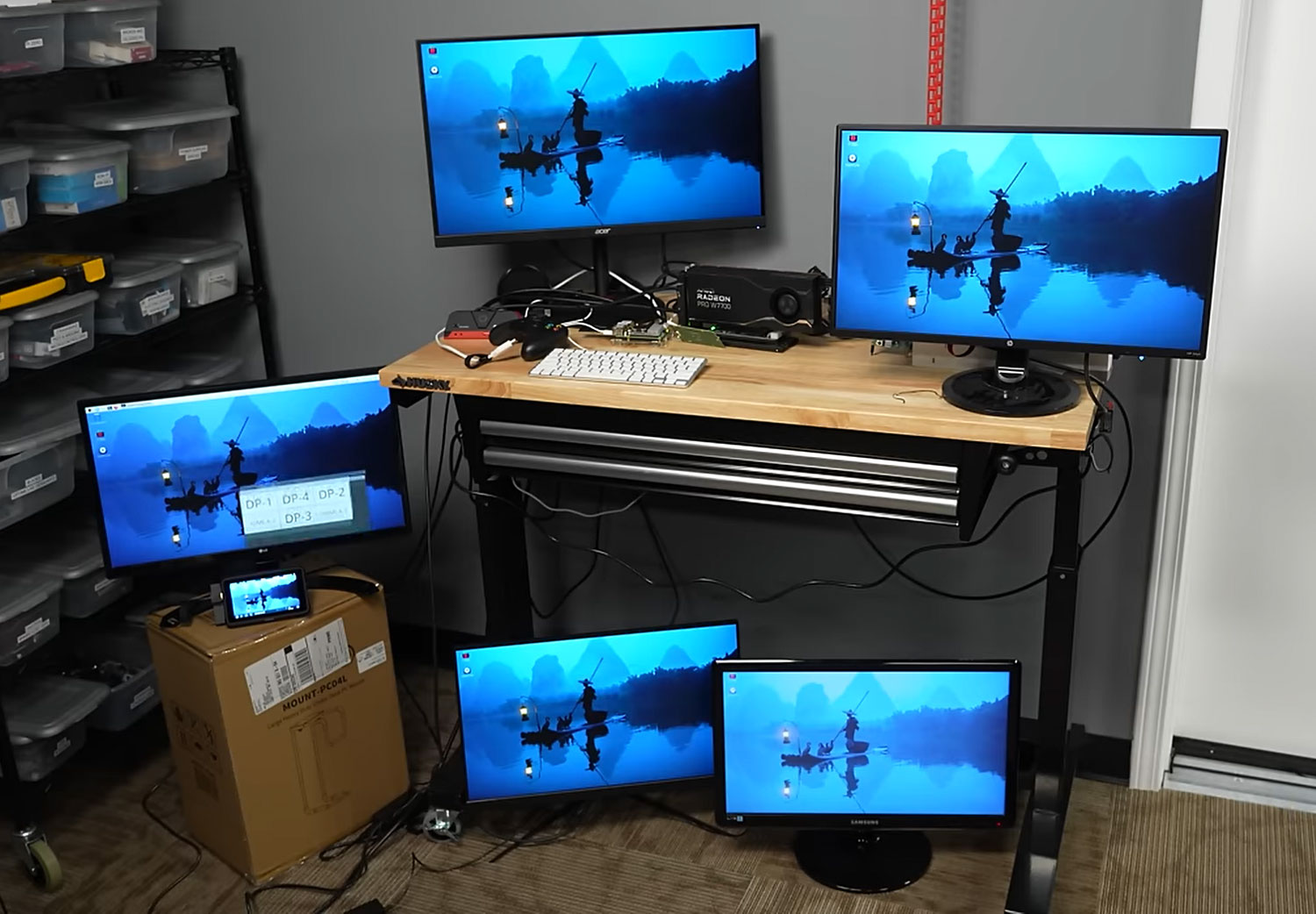
A leading Raspberry Pi torchbearer has demonstrated relatively modern AAA games like Doom Eternal, Crysis Remastered, Red Dead Redemption 2, and Forza Horizon 4, running at 4K on the humble $50 SBC.
Pi wizard Jeff Geerling shared a video of his latest attempts to boost the credit card-sized computer’s GPU muscle. Things have progressed since the Doom 3 4K demo he shared a few weeks ago. The most important developments since October are getting newer generation AMD Radeon GPUs to work with the Pi, potentially delivering massive performance uplifts.
To swiftly recap Geerling’s recent progress, he demoed 4K gaming on his Raspberry Pi 5 in October with the help of an eGPU setup featuring a modest Radeon RX 460. With this setup, some less demanding 3D titles like SuperTuxKart and Doom 3 (2004) could achieve 4K60 nirvana.
Now, thanks to Pi fanatics working on RX 6000 and RX 7000 series drivers, Geerling has been able to run some far newer AAA PC titles at 4K. However, we must warn that newer PC games aren’t hitting 4K60 even with the best RX 7000 card Geerling could get – primarily due to his latest test setup’s underpowered CPU, restricted bandwidth, and max 8GB RAM. He tested with a Radeon RX 6700 XT.
In addition to these gaming advances, the newest Radeon drivers and patches enable hardware video transcoding. LLM acceleration is still unavailable, and Geerling confirmed that AMD ROCm support isn’t coming to Arm soon.
How Doom Eternal (2000) fares on the Pi with a powerful eGPU setup using the Radeon RX 6700XT. Geerling admits this title is a little frustrating at 4K on his new setup, with an average of 20 FPS just too low for the fun factor. Typically, reducing the resolution can do wonders for frame rates.
Still, the Pi enthusiast commented that the CPU is such a bottleneck that it is only inches above 30 FPS when reducing screen res to 720p. At 4K with RTX On, the frame rate plummeted to around 12 FPS. A system utility revealed that the GPU utilization was below 50%, as the rest of the Pi system bottlenecked it so comprehensively.

Geerling also checked the benefits of overclocking the Pi 5 CPU from 2.4 to 3.0 GHz. However, for the new average 4K at 25 FPS performance observed, there was too much system instability to make it enjoyable.
If you care to digest the Pi enthusiasts video, you will see similar observations playing titles like Crysis Remastered, Red Dead Redemption 2, and Forza Horizon 4. Better experiences were seen in the Obduction adventure title and Halo 3. Geerling seemed most pleased with how well his Pi eGPU system handled Portal 2“”“” (2011), enjoying a “flawless… butter smooth” 4K gaming session. The same game was “extremely choppy” on the Pi’s iGPU at 720p.
Before the video wrapped up, Geerling turned his attention to serious application and content creation shenanigans with the eGPU. He plugged in the Radeon Pro W7700Pi’s workstation graphics card for this video part. Again, the Pi’s CPU, bandwidth, and meager 8GB of RAM decreased the system’s performance. Nevertheless, the Pi enthusiast enjoyed pushing this powerful GPU in the Gravitymark outer-space visuals rendering benchmark and creating a ‘Battlestation Pi’ with six external 60 Hz monitors.







